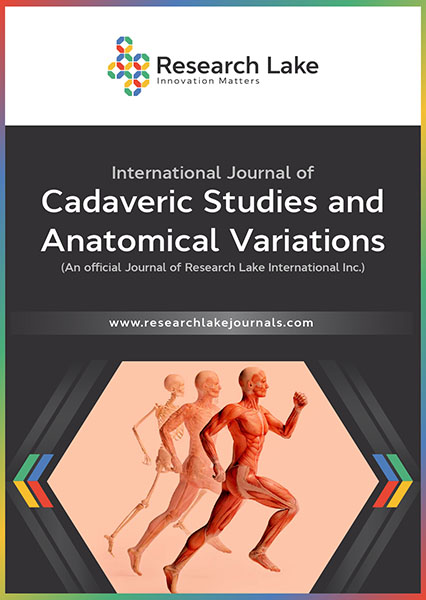Incomplete Transverse Pulmonary Fissures: Embryological Basis, Clinical, and Surgical Implications: A Cadaveric Case Report
Abstract
Incomplete pulmonary fissures (IPF) represent a common anatomical variation in the human lung. While often considered silent, incomplete pulmonary fissures can have notable clinical and surgical implications, necessitating a comprehensive understanding of their anatomical characteristics. IPF may have significant implications in both clinical practice and surgical interventions. We report a case of an incomplete transverse fissure of the right lung from an adult male cadaver, exploring the embryological basis, clinical significance, and surgical implications. The findings underscore the importance of understanding the lung embryology and resulting normal anatomy, and associated anatomical variations to ensure accurate diagnosis, appropriate management, and optimal surgical outcomes.
Copyright (c) 2024 Andrew Emmanuel Tito, Joseph Atupele Mwabaleke, Atuganile Mwasunga, Flora Masumbuo Fabian

This work is licensed under a Creative Commons Attribution-NonCommercial 4.0 International License.
Copyright © by the authors; licensee Research Lake International Inc., Canada. This article is an open access article distributed under the terms and conditions of the Creative Commons Attribution Non-Commercial License (CC BY-NC) (http://creativecommons.org/licenses/by-nc/4.0/).















